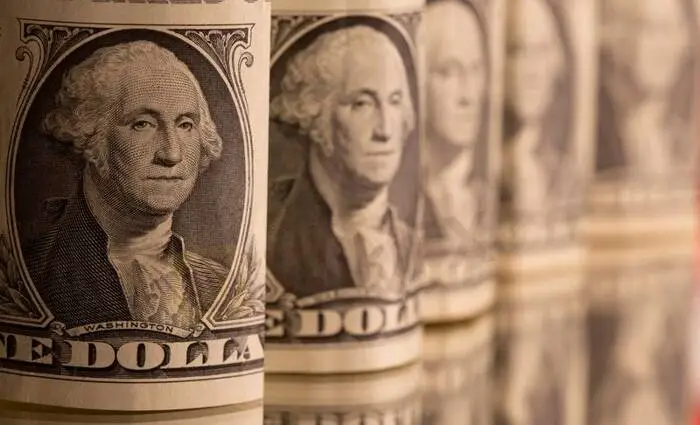简体中文
繁體中文
English
Pусский
日本語
ภาษาไทย
Tiếng Việt
Bahasa Indonesia
Español
हिन्दी
Filippiiniläinen
Français
Deutsch
Português
Türkçe
한국어
العربية
Analysis-As U.S. economy’s exceptionalism fades, so does the dollar
Abstract:The dollar’s rally to two-decade highs appears to have stalled, with doubts growing on whether the U.S. economy will prove as resilient and monetary policy as aggressive as previously expected.
The dollars rally to two-decade highs appears to have stalled, with doubts growing on whether the U.S. economy will prove as resilient and monetary policy as aggressive as previously expected.
After climbing 10% in three months, the greenback has slipped 3% since May 13. Some reckon thats because the safe-haven bid sparked by the Russia-Ukraine war has now ebbed. Others say that if the Federal Reserve were to tighten monetary policy significantly it would risk propelling the U.S. economy into recession.

And finally, while U.S. rate hikes will still outpace those in other major economies, there are signs that rate-hike laggards in the euro zone and Switzerland are readying their own policy-tightening campaigns.
On Monday, European Central Bank President Christine Lagarde dealt the dollar a blow, flagging that the blocs 8-year long experience with negative interest rates would end by September.
It upended the view, held by many, that the hit from the war would hobble the ECBs ability to significantly raise rates and sent the euro 1% higher against the greenback.
“What has been building through all of this and the market has been ignoring has been the European interest rate story,” said Richard Benson, co-Chief Investment Officer at Millennium Global, who has shifted from a “strategically long” dollar position to a “tactically short” trade earlier this month.
A resilient U.S. economy and adverse geo-politics had provided ideal conditions for dollar outperformance, but those are giving way to what Benson dubbed a “mushy” environment where risks of economic slowdown are becoming apparent.
Money markets still flag U.S. interest rates rising by around 175 basis points by year-end. But they now also price some 100 bps of ECB hikes, versus the 20 bps seen just after Russias attack on Ukraine.
BNP Paribas analysts said in a note the Fed rate cycle “is now fairly priced” and that they had increased “short” dollar positions versus the Australian, New Zealand and Swedish currencies.
Unless the market sees a new surge in U.S. rate pricing, they predicted “the dollar to decline, as investors resume carry trades,” a reference to buying higher-yielding currencies.
JPMorgan, while still bullish on the dollar, said currency markets were reacting to a shift from “U.S. exceptionalism to a global slowdown which encompasses the United States.”
Indeed, recent U.S. data, from unemployment to housing and business conditions, all hinted at slowing momentum.
Graphic: King dollar – https://fingfx.thomsonreuters.com/gfx/mkt/byprjdqgape/King%20dollar.JPG
278d32a1-f01f-4c8c-91fa-ba843bb7f77f1
BENIGN CASE?
Conventional wisdom holds the dollar strengthens in the run-up to Fed rate rises, then loses steam. In three out of the last four hiking cycles, the greenback index fell an average 1.4% between the first and last rate increase, Reuters analysis of Refinitiv data showed.
Some believe that still holds. Scott Bessent, who runs Key Square Group, said in an investor letter obtained by Reuters the dollar was on its final run, and “when this denouement concludes, we expect a multi-year weakening of the dollar.” Key Square declined to comment on the letter.
The dollars May 13 peak coincided with a build-up in bullish speculative long positions in the currency to more than $20 billion. But since then those dollar bulls have felt the heat from a near 20 bps fall in Treasury yields.
Analysts at ING said the “benign case” for financial markets would see the Fed pause after hiking rates to 2% in July.
Others reckon the Fed is at risk of hiking excessively, even though inflation is being driven by supply-side pressures that need fixing.
“By tightening too much the Fed risks choking off potential investment, that could help to ease the situation,” said Stuart Cole, chief macro strategist at brokerage Equiti Capital.
Graphic: Fx market positions – https://fingfx.thomsonreuters.com/gfx/mkt/dwpkrnzgevm/Fx%20market%20positions.JPG
f74c61f9-9338-4abe-ab19-895dfea1d1212
Still, even after recent declines, the dollar index is up some 6.3% in 2022, and could quickly resume its ascent if a European recession looks likely or if global investor confidence takes another tumble.
Millennium‘s Benson sees the U.S. currency’s current decline extending, yet calling the recent high a peak for the dollar is “a very big call to make.”
(Additional reporting by Sujata Rao and Svea Herbst-Bayliss; Editing by Chizu Nomiyama)
Disclaimer:
The views in this article only represent the author's personal views, and do not constitute investment advice on this platform. This platform does not guarantee the accuracy, completeness and timeliness of the information in the article, and will not be liable for any loss caused by the use of or reliance on the information in the article.
WikiFX Broker
Latest News
Saxo & Portuguese Bank Partnership
SEC Fines Broker-Dealers $275K for Incomplete SAR Filings
Elon Musk Warns of Imminent US Bankruptcy | Bitcoin Retreats from $100K
WikiEXPO Global Expert Interview: Advanced Practices and Insights in Financial Regulation
Justin Sun Invests $30M in Trump-Backed World Liberty Financial
Kraken Closes NFT Marketplace Amid New Product Focus
Robinhood Launches Ethereum Staking with 100% Rewards Match
Lured by False Promises: Malaysian Driver Lost RM218K to an Investment Scam
FTX Sets March 2025 Timeline for Creditor Payouts: What It Means for Investors
What is an Economic Calendar? How it works
Currency Calculator


